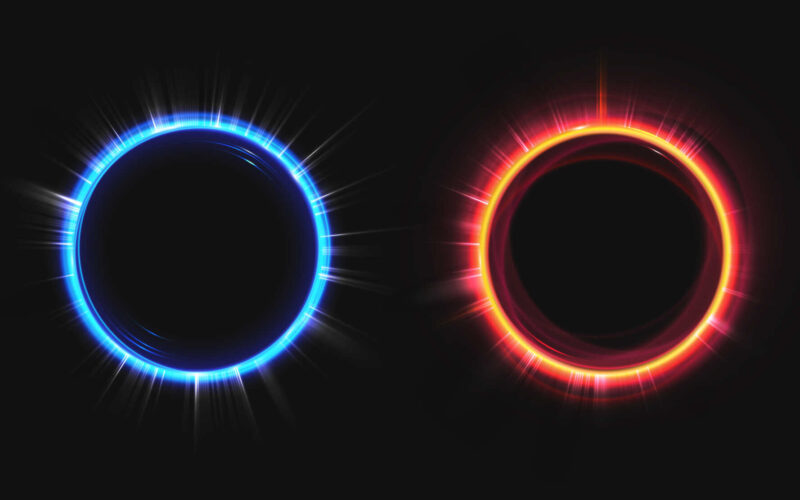What is an eclipse?
Lunar eclipse
A lunar eclipse is a phenomenon in which the shadow of the Earth obscures the moon. A lunar eclipse happens when the moon, earth, and sun are precisely aligned (P. Rafferty, 2019). In other words, it occurs when the Earth’s shadow blocks the sunlight from reaching the moon. A lunar eclipse occurs on a full moon, and because the moon’s orbit is tilted by about 5 degrees, it does not necessarily occur because it does not lie in a straight line in the order of the moon, Earth, and sun every month. Also, during a total lunar eclipse, when the sun’s light passes through the Earth’s atmosphere, blue light is scattered outward. So, because only red light bends in the direction of the moon, the moon looks red.
Solar eclipse
A solar eclipse is a phenomenon that occurs when the moon revolves around the Earth, and the Earth, moon, and sun are in a straight line. In other words, the moon blocks the sun, and the moon blocks the sunlight coming to Earth. The sun is about 400 times bigger than the moon. However, since the moon is about 400 times closer to the Earth than the sun, the moon can block the large amount of sunlight that is supposed to that the small moon reaches the Earth.
What did ancient people believe solar eclipses were?
The ancient Greeks thought that the solar eclipse was the punishment of the king from God. They believed that the king could be truly saved through the punishment that came down from God. The Aztec priests also predicted that the world would end if an eclipse appeared, so they sacrificed humans to avoid it. They believed that, thanks to these offerings, they were able to avoid the end of the world (Grady, 2017). Moreover, the ancient Chinese believed that an eclipse occurred because a dragon swallowed the sun.
How does an eclipse affect nature and animals on Earth?
An eclipse affects animals and nature. First, in the case of birds, during a solar eclipse, it is originally daytime. However, it is seen as the night when the sun’s light is covered by the eclipse. So, birds act and think that the morning is night, and when the sun comes back, they act and think that it is morning (McLendon, 2019). In other words, birds recognize morning and night through light and darkness and confuse day and night as an eclipse. Second, the occurrence of solar eclipses affects the ionosphere and thermosphere of the atmosphere, and the occurrence of lunar eclipses causes aurora in the northern and southern hemispheres due to changes in atmospheric flow (Mehar, 2022).
Conclusion
When the moon orbits, the Solar eclipse is a phenomenon that occurs when the Earth, the moon, and the sun are in a straight line, and the lunar eclipse occurs when the moon, the sun, and the Earth are in a straight line in orbit. In particular, ancient people did not know about the principle of the solar eclipse because science was not yet advanced. Thus, various mythical stories about solar eclipses arose. In addition, since the occurrence of solar eclipses is related to animals and nature, continuous research is needed.
References
– Grady, C. (2017). When the dragon ate the sun: how ancient peoples interpreted solar eclipses. [online] Vox. Available at: https://www.vox.com/culture/2017/8/18/16078886/total-solar-eclipse-folklore [Accessed 30 September 2022].
– McLendon, R. (2019). How Does a Solar Eclipse Affect Animals? [online] Treehugger. Available at: https://www.treehugger.com/how-does-solar-eclipse-affect-animals-4868135 [Accessed 30 September 2022].
– Mehar, P. (2022). North pole solar eclipse created changes in auroras in both of Earth’s hemispheres. [online] Tech Explorist. Available at: https://www.techexplorist.com/north-pole-solar-eclipse-created-changes-auroras-both-earths-hemispheres/44071/ [Accessed 30 September 2022].
– P. Rafferty, J. (2019). How Do You Tell the Difference Between Total, Annular, Solar, and Lunar Eclipses? In: Encyclopædia Britannica. [online] Available at: https://www.britannica.com/story/how-do-you-tell-the-difference-between-total-annular-solar-and-lunar-eclipses [Accessed 30 September 2022].
